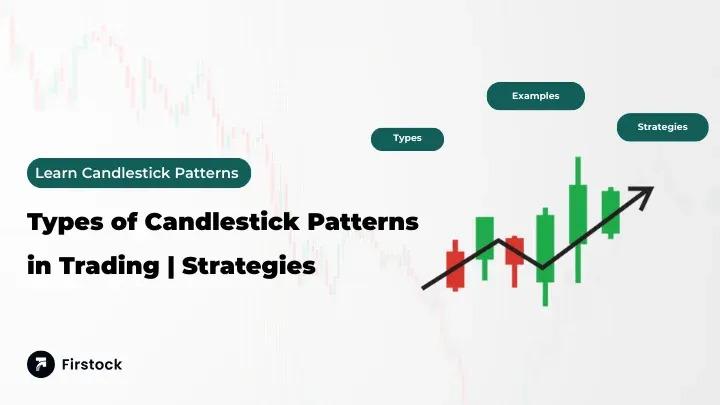What is Candlestick Pattern? Types Explained – Firstock

What is Candlestick Pattern? – Firstock
Introduction
Have you ever wondered how traders predict whether a stock will rise or fall? One of the most powerful tools they use is the candlestick pattern. Think of it like reading the "mood" of the market. Just as facial expressions show emotions, candlestick charts reveal the emotions of buyers and sellers.
In this article, we’ll explore what is candlestick pattern, break down all types of candlestick patterns, and show you how they work in real-world trading. Whether you’re a beginner or just curious, by the end, you’ll have a clear picture of why candlestick patterns are so popular among traders.
Learn what is candlestick pattern, all types of candlestick patterns, and how traders use them. Discover key insights into types of candlestick patterns.
What is a Candlestick Pattern?
A candlestick pattern is a method of displaying price movement in the stock market. Each "candle" represents a specific time period (like 1 minute, 1 hour, or 1 day). The shape of the candle tells us whether buyers (bulls) or sellers (bears) had control during that time.
Imagine it like this: a candlestick is a snapshot of the battle between demand and supply.
History of Candlestick Patterns
Candlestick patterns date back to the 1700s in Japan, where rice traders used them to predict price movements. A trader named Munehisa Homma is credited with developing this method, which is still relevant centuries later.
Why Do Traders Use Candlestick Patterns?
Traders love candlestick patterns because they are:
-
Easy to understand – one glance gives insight into market psychology.
-
Visual and clear – patterns are more intuitive than plain numbers.
-
Helpful for decision-making – traders can spot entry and exit points.
Anatomy of a Candlestick
A candlestick has four main parts:
-
Open Price – where the stock started.
-
Close Price – where the stock ended.
-
Wick/Shadow – highest and lowest points during the session.
-
Body – the colored part showing gain (green/white) or loss (red/black).
Types of Candlestick Patterns Overview
There are three broad categories of candlestick patterns:
-
Single Candlestick Patterns – one candle showing reversal or continuation.
-
Double Candlestick Patterns – two candles forming a specific signal.
-
Triple Candlestick Patterns – three candles confirming stronger signals.
Single Candlestick Patterns
These include:
-
Doji – market indecision, shaped like a cross.
-
Hammer – bullish reversal, long lower shadow.
-
Shooting Star – bearish reversal, long upper shadow.
Bullish Reversal Patterns
These patterns suggest prices may rise:
-
Bullish Engulfing – small red candle followed by large green.
-
Morning Star – three-candle pattern signaling bullish shift.
-
Piercing Line – green candle covers half of prior red.
Bearish Reversal Patterns
These patterns suggest prices may fall:
-
Bearish Engulfing – green candle overtaken by large red.
-
Evening Star – opposite of Morning Star, bearish signal.
-
Dark Cloud Cover – red candle cuts into prior green body.
Continuation Patterns
These show that a trend will likely continue:
-
Rising Three Methods – uptrend continuation.
-
Falling Three Methods – downtrend continuation.
All Types of Candlestick Patterns Explained
To make things simpler, here’s a quick classification of all types of candlestick patterns:
-
Reversal Patterns: Hammer, Shooting Star, Engulfing, Morning/Evening Star.
-
Continuation Patterns: Rising Three, Falling Three.
-
Indecision Patterns: Doji, Spinning Top.
Most Common Candlestick Patterns Every Trader Should Know
If you’re starting out, focus on these first:
-
Doji
-
Hammer
-
Shooting Star
-
Bullish & Bearish Engulfing
-
Morning & Evening Star
These patterns appear often and are easier to recognize.
How to Read Candlestick Patterns Effectively
Here are some tips:
-
Look at the trend first (uptrend or downtrend).
-
Identify the pattern clearly before making decisions.
-
Combine candlestick signals with other tools (like RSI or Moving Averages).
Mistakes to Avoid While Using Candlestick Patterns
-
Don’t rely on a single candle without context.
-
Avoid emotional decisions; wait for confirmation.
-
Don’t forget volume and trend direction.
Candlestick Patterns vs Other Charting Tools
Candlesticks are powerful, but traders also use:
-
Line Charts – simple, but less detail.
-
Bar Charts – similar to candlesticks but less visual.
-
Indicators – RSI, MACD, Moving Averages.
Candlestick patterns work best when combined with these tools.
Final Thoughts on Using Candlestick Patterns
Candlestick patterns are like the language of the market. By learning to read them, you can understand the emotions behind price movements. While no method guarantees success, candlestick patterns provide an excellent foundation for decision-making.
FAQs
1. What is candlestick pattern in simple words?
A candlestick pattern is a way to show how a stock’s price moved in a specific time, using candles that display open, close, high, and low prices.
2. How many types of candlestick patterns are there?
There are dozens, but the main categories include single, double, and triple candlestick patterns, covering reversal, continuation, and indecision signals.
3. Which candlestick pattern is the most reliable?
Patterns like Engulfing, Hammer, and Morning Star are widely considered reliable, especially when confirmed with other tools.
4. Can beginners use candlestick patterns?
Yes, beginners can start with simple patterns like Doji, Hammer, and Engulfing before moving on to advanced ones.
5. Do candlestick patterns work 100% of the time?
No, candlestick patterns are not foolproof. They work best when combined with technical indicators and risk management.







